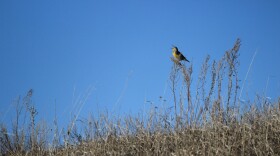The topic of how to manage grasslands — or more specifically, native prairie — came up in conversation recently. One of the participants suggested that all grazing animals should be removed, and just leave it alone. No burning, no grazing, no nothing.
We may occasionally hear disparaging comments about the management of native prairie (e.g., overgrazing), but leaving it completely idle or rested for many years is not a good option. Active management is needed to keep the prairie in good condition. How best to do it is the question managers have been asking and researching.
Prairie plants evolved under a wide range of conditions including grazing by bison (at times heavily), wildfires, and drought, to name a few. As a result, native prairie plants have evolved adaptations to those conditions. Long-term non-use and no fire are not conducive to these plants remaining healthy and productive.
Managers have a variety of techniques they can implement in managing prairie depending on their objectives. The objectives for a rancher, for example, would likely differ from that of a wildlife manager. Grazing systems have been developed to help managers maintain or improve the conditions or health of the grasslands. They often involve rotating the grazing animals between pastures. Differences in these systems involve differences in when and how much to graze, including considerations of grazing intensity and frequency, selectivity, seasonality, and other factors.
Prescribed burning is also a common managerial technique used to achieve a variety of objectives, including to reduce the wildfire risk or reduce invasive exotic (non-native) plants (for example smooth brome, Kentucky bluegrass) or perhaps invasive woody plants such as juniper. To help meet the objective, the prescription would have a window or set of conditions in which the burn would be conducted, and often includes specific ranges in humidity, wind speed, temperature, whether to burn with the wind or against it, and timing of the burn with respect to plant growth.
If you have the opportunity, visit some prairie that has had several years of no management. You may find it heavily invaded by smooth brome, Kentucky bluegrass, or other exotic plants, a heavy accumulation of mulch that physically blocks plant growth, and the abundance and diversity of the native plants much reduced or perhaps largely absent.





